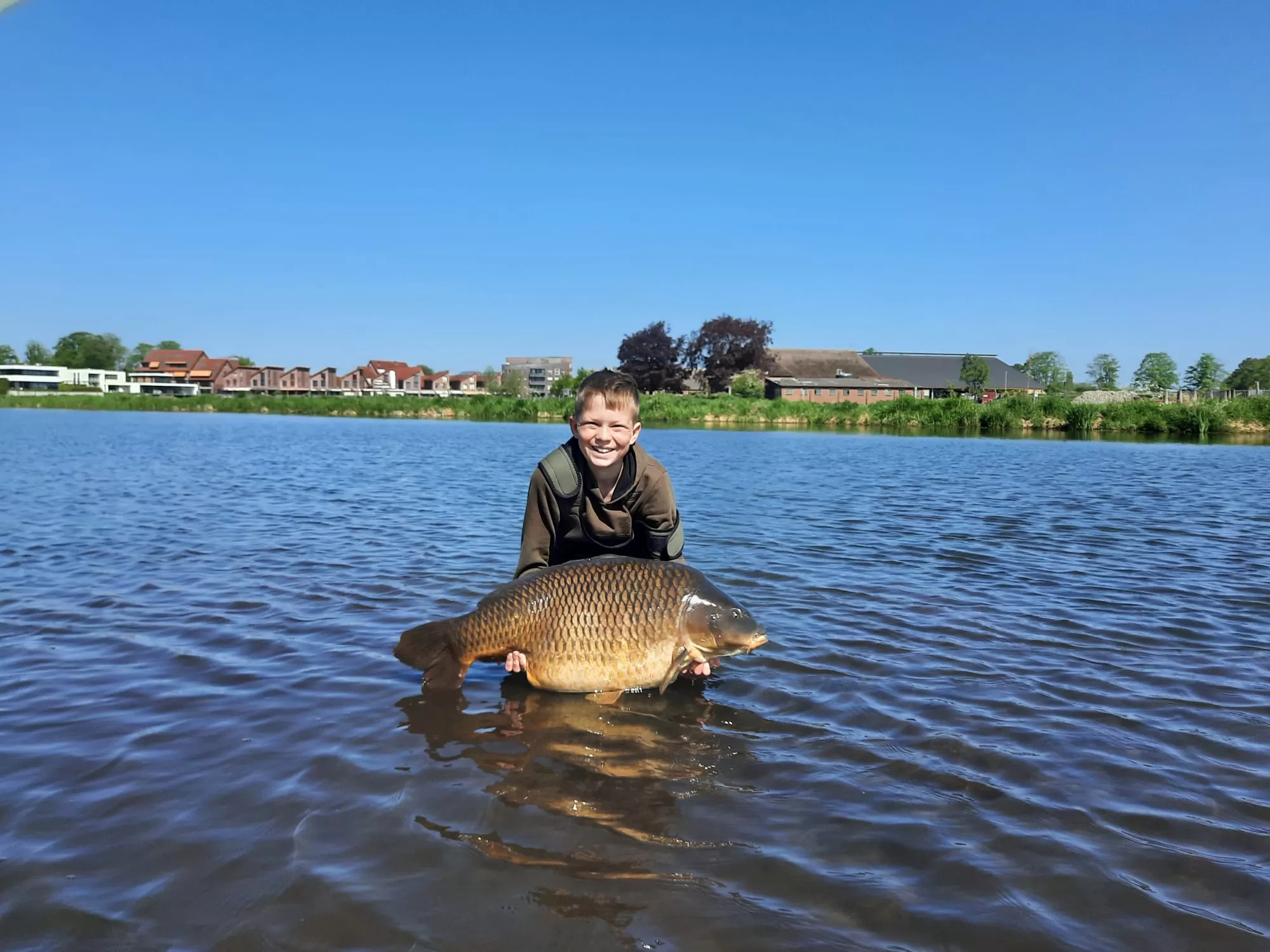The entire length of the river can be fished with the
VISpas in combination with the
VISplanner app.
Over the course of the 26 kilometres that the Oude IJssel flows through the Netherlands, the river changes in character. The section flowing from the German border to Ulft is little more than a sort of wide ‘ditch’, 15 metres in breadth and two metres deep. Between Ulft and Doesburg the river broadens out to 35 to 65 metres, and increases in depth, reaching four to five metres. Because the Oude IJssel flows past many private estates, this limits the possibility of driving alongside the water and means you may have to hunt for a spot. West of Doetinchem and near Doesburg, for example, there are (or shortly will be) dozens of good fishing spots.
Coarse fish
The Oude IJssel is renowned for its good roach catches, which peak in the autumn. If you want to use a pole, then make a feeding spot 10 to 13 metres from the shore, choose a 3g float and allow the rig to drift slowly over your spot. Casters and maggots on size 16 to 18 hooks on an 8 to 10/00 nylon underline are always an effective option. You can also get good results with a feeder rod, and will mainly land flawless, beautifully dark-coloured bream weighing four pounds on average. In general, the most productive spots are those about three quarters of the way across the water or against the weeds on the other side. However, always check that the riverbed is clear before setting up a spot.
Predatory fish
When it comes to predatory fish, the Oude IJssel is good for pike, asp and catfish. For example, the average pike measures about 75 centimetres, but you can also land pike of over a metre in length. Dragging from a boat with plugs or soft baits is a popular approach because you can cover a lot of water that way. If you’re fishing from the banks, then using dead bait can be rewarding.
Asp favour spots where bait fish struggle due to the current. This predator also regularly patrols knee-deep shallows in search of prey. Select top water lures, small crankbaits and spinners to tempt these sleek and beautiful silver arrows.
Wels catfish mainly occur as by-catch during pike and carp angling, but are a good target species when fishing on the Oude IJssel. The specialists who focus on wels catfish have landed specimens of up to 236 cm, but they come in on average at 80 to 120 cm.
Carp
Carp anglers can truly enjoy themselves on the Oude IJssel, but they will have to make careful preparations. The substantial domesticated carp and distinctive mirror carp – weighing 20 pounds on average, with 30-pounders also a regular occurrence – attract enthusiasts from all over. The large number of anglers means that a standard approach will not guarantee success. The carp avoid the best known spots, and also shy away from large feeding spots. Therefore, the best approach is to seek out less popular spots, and aim for structures that break up the monotony of the river bed. Finally, exercise caution with pre-feeding and with your choice of hook bait, since there are often also numerous crayfish and crabs.

Predatory fish event
As part of the Swimway Oude IJssel project, Sportvisserij Nederland is joining forces with angling bodies Hengelsport Federatie Midden Nederland and Landesfischereiverband Westfalen und Lippe, and the Rijn & IJssel Water Authority to research fish migration. Anglers can contribute to this research on specially designated fishing days. Any asp, wels catfish and ide caught will be fitted with a transmitter that will enable them to be tracked for a number of years. If you would like to take part, then visit
facebook.com/SwimwayOudeIJssel for more information.